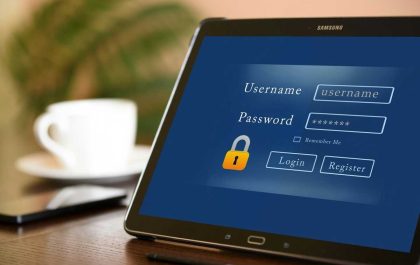Not all types of malware throw up the same symptoms. While some may slow down or crash your computer, others may use up your Internet connection or spy on you. Identifying the type of malware infection on your computer isn’t an easy process — you’ll need to use the right software and your powers of observation. Here are a few steps that can help you identify what type of malicious software plagues your computer.
Table of Contents
Toggle1. Use Advanced Antivirus Software
Every computer and mobile device with a modern operating system has some form of basic security software. The problem is that most default antivirus tools can only recognize primary threats. With emerging technology threats outpacing conventional ones like viruses, you should download a top anti-malware program that can identify all types of malware, from viruses to ransomware.
2. Watch Out for the Warning Signs
As mentioned above, not all types of malware throw up the same symptoms. Match the symptoms with the correct malware to employ the best remediation solution. Let’s look at some symptoms and what they could mean:
- If you see pop-up ads, extensions, or mysterious toolbars on your browser, or if your homepage keeps changing, then you most likely have an adware infection. You can use an adware remover to get rid of this unwanted program.
- If your files and folders are inaccessible and your system is crashing, you probably have a computer virus or a computer worm. Your computer’s security tools should help you stop legacy threats like viruses.
- If your files, folders, or computer won’t open, and you get a payment notice, then you may have a ransomware strain on your computer. Software like Malwarebytes anti-ransomware protection may help you remove ransomware.
- If you notice that your phone or computer’s camera, microphone, or GPS are activating without reason, or if your personal information is stolen, then you may have a creepy spyware infection. An anti-malware download should return things to normal.
- If someone has taken over your computer remotely, then you may be suffering from a Trojan horse, rootkit, or a backdoor attack. These threats are pretty severe. Turn off your computer and disconnect the Internet immediately if it carries confidential data. Next, contact an IT specialist for assistance.
- If your computer is slowing down and your keystrokes are taking longer than usual to register on your screen, then stop immediately, and check out how to detect keylogger A keylogger can help a threat actor gain sensitive data like your usernames, passwords, emails, and more.
3. Keep Reading
Modern malicious software threats are evolving and growing more dangerous regularly. For example, the modular malware TrickBot started as a Banker Trojan, but later its developers enhanced it to drop other malware and spread like a worm. It’s a good idea to read up on cybersecurity news to protect yourself from the newest malicious software.
In addition, look for the most recent patches for your computer. Software patches can plug flaws that emerging malware often exploits to infect computers. Finally, think twice before visiting an untrustworthy website, opening an unknown email, or downloading a strange attachment if you value your data and privacy.
Shashi Teja
Related posts
Hot Topics
What is Kafka Used For: A Complete Guide
What is Kafka used for? If you’ve been diving into the world of distributed systems, microservices, or data streaming, you’ve…
How Do Password Managers Work? The Guide That Finally Makes Sense
Ever wonder how do password managers work and whether they’re actually safe? I get it. The idea of putting all…



